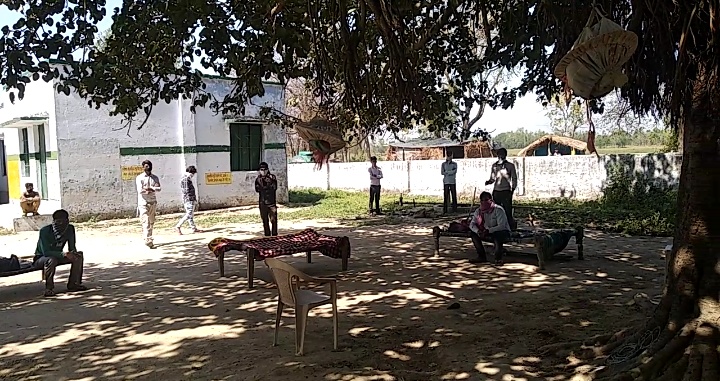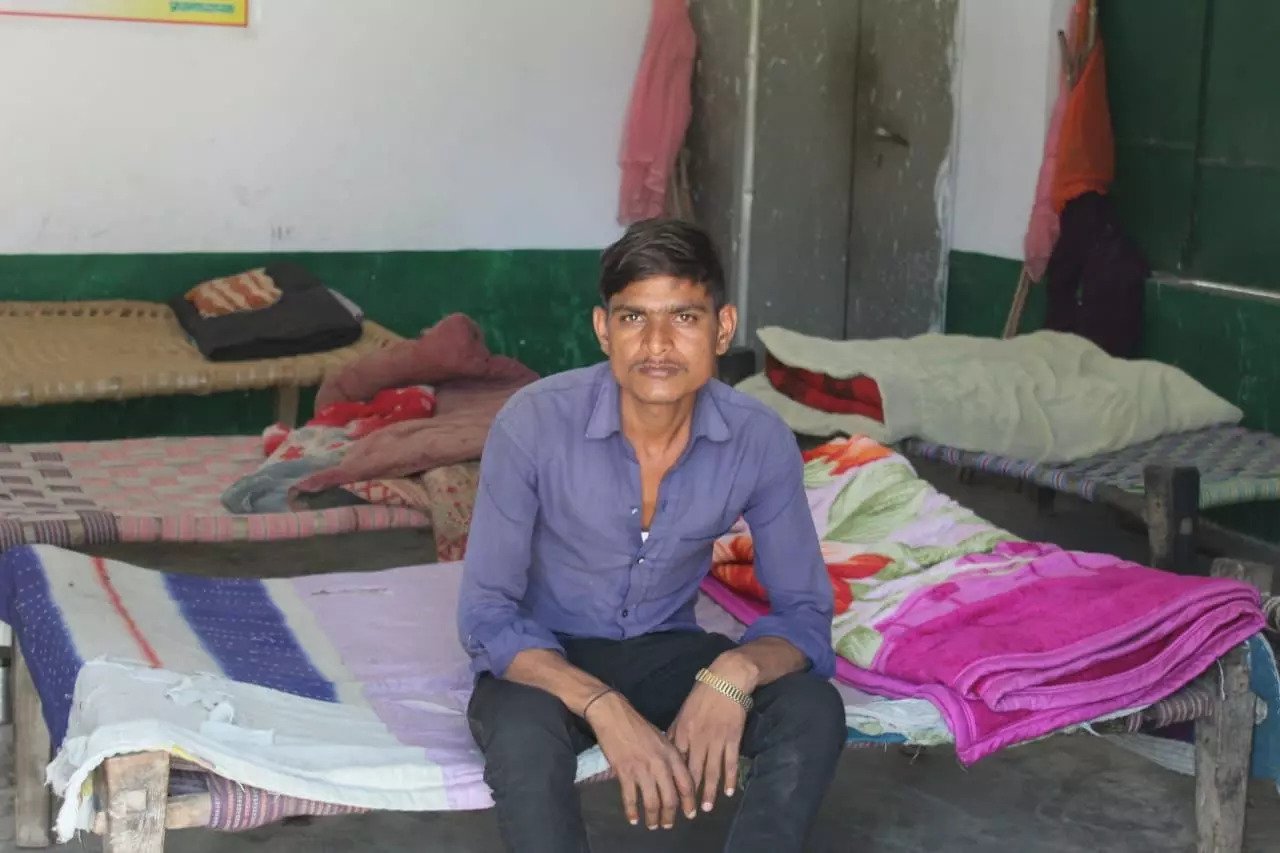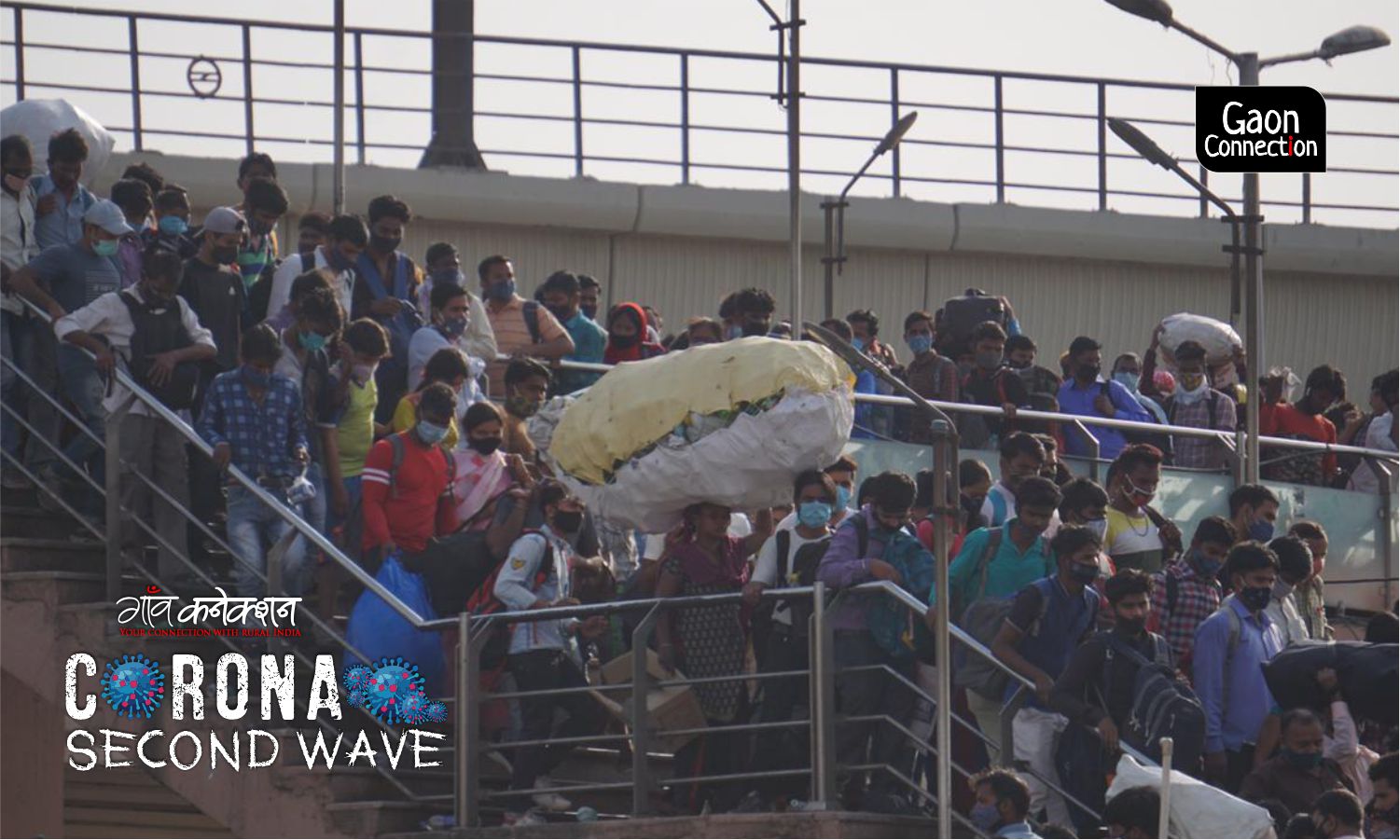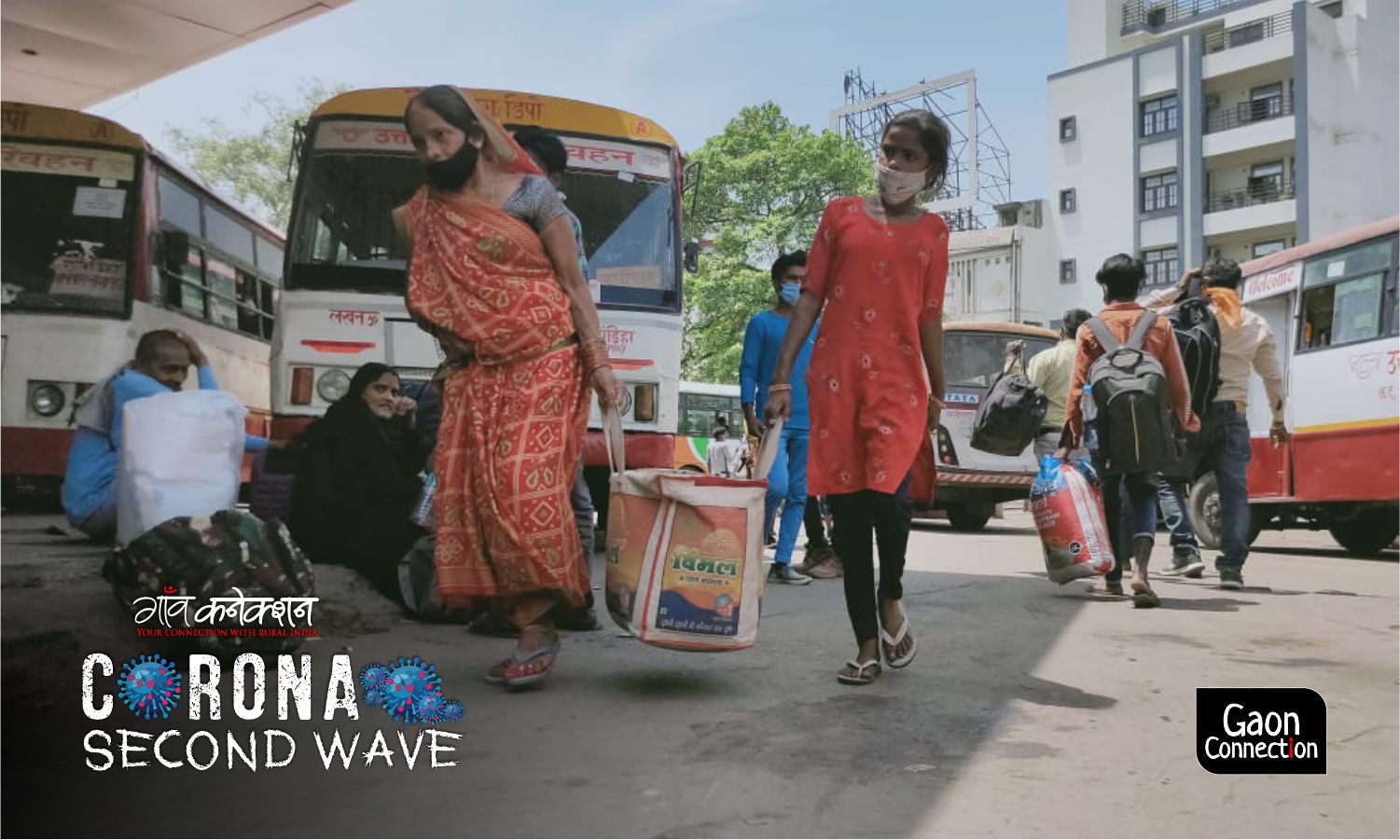As cities go under lockdown, migrant workers return to the villages. But where are the quarantine facilities?
Yet another exodus to rural India has begun following the second wave COVID-19 curfews and lockdowns. But there are no quarantine centres in towns and villages. This, fear villagers, will contribute to the spread of the virus in rural India.


If left unchecked and without quarantine, these migrant workers may contribute to an increase in the number of COVID cases in villages. All photos: By arrangement
Three days after a complete lockdown was announced in Karnataka on April 26, Shekharappa Devanagouda, who worked as a driver in the state capital Bengaluru, decided to return to his village in Raichur, nearly 500 kilometres away.
After travelling for over eight hours, when he arrived at his village, he directly went home. There was no quarantine centre at the village to isolate people returning from cities, which at present are the epicentres of COVID19 pandemic. “I directly went home after reaching my village. I was not told to stay in a quarantine centre,” 30-year-old Devanagouda told Gaon Connection.

Nearly 2,000 kilometres to the north-east of Raichur, a similar situation is playing out in villages of Bihar. “Migrant workers are coming back to villages. This morning, a group of migrant workers came from Bambai [Mumbai] by train and then auto, and went straight home,” Rajendra Jha, secretary, Kosi Seva Sadan, a Saharsa-based non-profit in Bihar, told Gaon Connection. “Last year, people were tested at stations and quarantine centres. But, nothing this time because of which corona is spreading in villages,” he added.
Also Read: Rural Uttar Pradesh in a fever of trouble
The second wave of COVID-19 is sweeping across India, with over 414,000 fresh cases reported in the past 24 hours and 3,915 deaths. The second wave, as experts point out, is far more virulent than the first wave and the virus has already made inroads into rural India.

As cities and states are put under lockdown to control the spread of the virus, migrant workers are fleeing urban centres and returning to their towns and villages. But unlike last year, there is no provision for quarantine centres at the villages.
“For the past twenty days, migrant workers have been coming from Punjab, Karnataka and Maharashtra. No one is being questioned, no one is being tested,” 21-year-old Saroj Kumar told Gaon Connection. He is a resident of Atmohan village in East Champaran district of Bihar. “Despite corona cases being so high, quarantine centres have not been set up in villages. This despite almost every household in the village suffering from cold and fever [classic COVID19 symptoms],” Kumar added.
Village level quarantine centres
Last year, during the first wave, to curb the spread of the novel coronavirus, the Indian government had advised a 14-day quarantine for returning migrant workers. According to the Ministry of Health and Family Welfare, basic infrastructure/functional requirements at a quarantine facility included lighting, ventilation, electricity, a ceiling fan, potable water, food, snacks and recreation areas, including television and sanitation.

Also Read: A tweet opens a Pandora’s box of how rural India is coping with the COVID19 second wave
This year, when the second wave is peaking and thousands are dying daily, all these quarantine centres lie vacant, even though there is an inflow of migrant workers following curfews and lockdowns in several states across the country. If left unchecked and without quarantine, these migrant workers may contribute to an increase in the number of COVID cases in villages.
“There is a possibility that migrant workers going directly to their homes without being tested or quarantined would increase cases in villages,” Rajasthan-based Santosh Punia, member, Aajeevika Bureau, a non-profit working to enhance the dignity and wellbeing of migrant workers, told Gaon Connection. “In rural areas, COVID cases have already increased as compared to last year. Testing is still low. If it is increased, we would see an increase in cases,” he added.
“The state governments have given orders to test migrant workers and get results within seventy two hours. Those who do not have reports should be quarantined for fifteen days. But it is not being strictly followed. No arrangements for quarantine centres have been made so far,” said Punia.
Also Read: Testing times for rural India as delay in RT-PCR test results may hasten the COVID spread

Shresth Pathak, a resident of Sitlakhet village in Almora, Uttarakhand, has similar fears. He works at an IT firm in Delhi, and during the lockdown last year, he returned home. But this time it is different. “Last year, when I returned to the village, I was quarantined and given a slip stating I was under quarantine for fourteen days. Nothing of that sort is happening this year,” 25-year-old Pathak told Gaon Connection.
Moreover, even as the virus makes its way to the hill villages this year, rural inhabitants and authorities have become careless, claimed Pathak. Most of the people in his village in Almora have recently returned from Delhi, Jaipur (Rajasthan) and Bengaluru (Karnataka), all COVID-19 hotspots.
According to Saroj Kumar of Pashchim Champaran in Bihar, besides migrant workers, every day, people also come in from neighbouring Nepal, which is a mere one-and-a-half kilometres away. “People come from Nepal to buy and sell goods. But even at the border, there is no testing,” he complained. The only relief is that rural inhabitants are vigilant about wearing masks this year, he said.
Also Read: With no tests and no treatment, people in rural India are dying of COVID-like symptoms

‘No directions to village heads’
Recently, the Uttar Pradesh (UP) government issued fresh guidelines for returning migrant workers. Those showing symptoms have to undergo a mandatory 14-day quarantine. Those asymptomatic have to spend seven days in quarantine.
According to news reports, the state government has asked gram pradhans (village heads) to make a list of such returning workers and set up camps in government buildings such as primary schools, where they would be provided with food and essential amenities, such as bedding and handwash. All migrant workers would have to be screened by the district administration.
However, gram pradhans claim they have received no directions from the government. “Because of the gram panchayat elections, at least a hundred migrant workers have come to our village. But there are no directions or arrangements by the government this year,” Dileep Tripathi, gram pradhan of Hasuri Ausanpur village in Siddharthnagar district of Uttar Pradesh, told Gaon Connection. “Last year, we were told to make arrangements for migrant workers. Everyone is roaming around freely this year,” he said.

“Last year, we were told we would be given funds for making arrangements for migrant workers, but we managed all expenses for their ration and sanitisation of centres out of our pockets,” he alleged.
Gaon Connection contacted Deepak Meena, the district magistrate of Siddharthnagar, who dismissed such allegations and said that the district administration has been conducting testing of returning migrant workers.
Meena also informed that the administration has set up quarantine centres and is also starting community kitchens for them. “Two such centres have been set up in every tehsil [this district comprises five tehsils]. We have made arrangements for their food and lodging. Those who do not have facilities at home are housed in these centres,” he said.
“If they test negative and do not show symptoms, we send them home. If they test negative but show symptoms, we ask them to stay in quarantine until their RT-PCR test result. If they test positive, they are either sent to the local health facility or told to isolate at home,” he explained.
Incidentally, last year, home isolation was not allowed, said the district magistrate.

‘Fake COVID negative reports’
According to guidelines by several states, all migrant workers are required to undergo a reverse transcription-polymerase chain reaction (RT-PCR) test. No one was to be allowed into their native states without a COVID negative certificate. However, the ground reality is very different.
Pathak of Almora alleged that those manning the village barricades take a “bribe of one thousand rupees and give out COVID negative reports to migrant workers. How can we stop this?” asked a worried Pathak.
“The migrant workers are moving freely. If we ask them to wear masks or get tested, they say corona nikal jaegaa toh hamari badnami hogi [If we test positive, we will be defamed],” Pathak added.
Similar allegations of fake COVID reports are made by 25-year-old Thakaram Chaudhary, who lives in Sara Dhanji village in Barmer district of Rajasthan. “Many people in my village have returned from Andhra Pradesh with fake reports. Over ten per cent of those coming have not tested for COVID and have for fake negative reports,” he claimed.
64% migrant workers quarantined last year
Last year, in a nationwide survey conducted by Gaon Connection, it was found that over 64 per cent of migrant workers were quarantined upon returning to their home states/districts.
Half of these underwent home quarantine while the other half were kept in schools and other institutes that had been converted into quarantine facilities. Over 44 per cent of migrant workers were kept at quarantine facilities for 14 days.
Also Read: 64% migrant workers were quarantined in villages, 9 in 10 didn’t undergo COVID-19 testing

